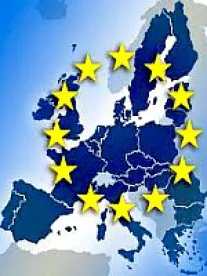The European Parliament became the most recent body to ratify an expansion of the expanded World Trade Organization (WTO) Information Technology Agreement (ITA). The deal had previously been committed to and signed by the EU, but as of June 8, 2016, it has the European Parliament’s legislative backing.
The original iteration of the ITA was adopted in 1996 by 29 WTO members at the Singapore Ministerial Conference and eliminated import duties on products which in 2013 accounted for an estimated $1.6 trillion. The number of participants grew to 82, however the rapid rate of innovation in the tech sector quickly rendered the deal inadequate. The IT products included under the original agreement include computers, telecommunication equipment, semiconductors, semiconductor manufacturing and testing equipment, and software, as well as most parts and accessories for these products. Today trade in these products accounts for approximately 10 % of global merchandise exports.
 The IT sector has been one of the fastest growing in world trade, so the need to expand the technological products included under the ITA was almost immediately apparent. In an effort to address this, 50 members of the WTO, including the United States and China, negotiated an expansion for the ITA at the Nairobi Ministerial Conference in December 2015. The expansion adds an additional 201 products to the agreement, eliminating tariffs on new technology products valued at over $1.3 trillion per year, representing approximately 7% of global trade.
The IT sector has been one of the fastest growing in world trade, so the need to expand the technological products included under the ITA was almost immediately apparent. In an effort to address this, 50 members of the WTO, including the United States and China, negotiated an expansion for the ITA at the Nairobi Ministerial Conference in December 2015. The expansion adds an additional 201 products to the agreement, eliminating tariffs on new technology products valued at over $1.3 trillion per year, representing approximately 7% of global trade.
It is the biggest tariff-cutting deal in WTO history and the first major one since the original ITA was adopted in 1996.
The ITA expansion only took effect once the negotiators had reached a so-called critical mass of participation, defined as capturing 90% of trade in the goods covered by the agreement. The 25 WTO member states which have signed the expansion agreement, including the EU, exceed this 90% requirement. Thus, all 162 WTO members will benefit from the duty-free market access of those member states committed to eliminating tariffs on the newest technology products. These markets include among others Australia, Canada, China, European Union (counted as one), Israel, Japan, South Korea, Malaysia, Norway, Philippines, Singapore, Switzerland, Chinese Taipei, Thailand, and the United States.
The reduced tariff affects most technology products but excludes LED displays and lithium ion batteries. Products specific to the automotive industry include GPS navigation systems, touch screens, video cameras, and a broad array of technological components and equipment. (See complete list here). The first set of tariff cuts will be implemented July 1, 2016, with subsequent yearly reductions until the tariffs are eliminated by July 1, 2019.
Leslie A. Ledbetter is the author of this article.



 />i
/>i
